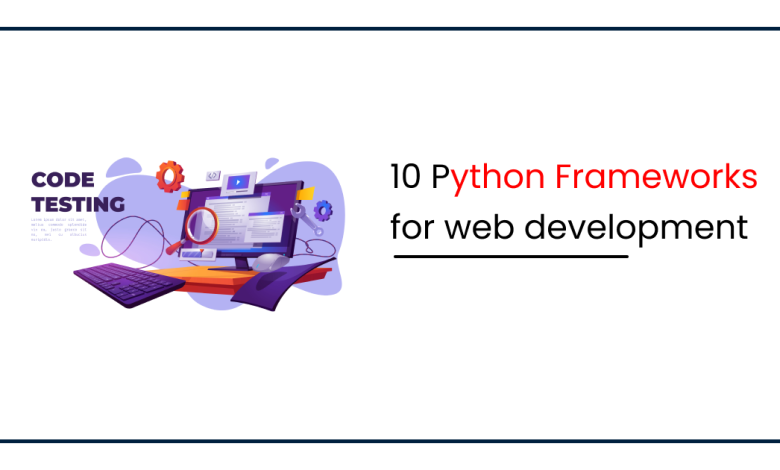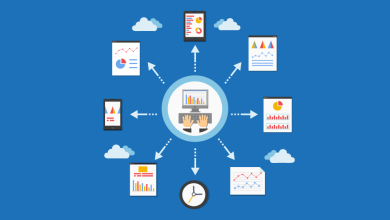
From Django to Bottle, from Flask to Pyramid, there are plenty of python frameworks out there that you can use to create web applications. These frameworks are an important tool in any developer’s toolbox and can make your life much easier, especially if you are new to developing for the web or building your own websites and applications. This list will give you an overview of the most popular python frameworks and highlight their main features so that you can decide which one would be best suited to your needs and goals as a developer.
1) Pylons
Pylons is a great python framework for developing web applications. It offers many features and is very easy to use. Plus, it’s open source and free to use. Pylon is a great choice for small or large projects. It can be used as the foundation of an application or just as an add-on package to another project. Many developers love the don’t repeat yourself (DRY) philosophy that guides Pylons’ design. That means you don’t have to write the same code twice – which is pretty cool! For more information on this framework, click here.
2) Pyramid
Pyramid is a lightweight Python web framework. It offers both full-stack and micro-framework versions. The micro-framework version is ideal for small applications while the full-stack version is better suited for complex, large-scale projects.
Pyramid has a very active community and offers excellent documentation. Some of its key features include URL routing, request and response objects, and templates.
Pyramid is a great choice for experienced Python developers who are looking for a fast and flexible framework.
3) Django
Django is a high-level Python Web framework that encourages rapid development and clean, pragmatic design. Built by experienced developers, it takes care of much of the hassle of Web development, so you can focus on writing your app without needing to reinvent the wheel. It’s free and open source.
Django includes an inbuilt user authentication system with support for session management. You also get built-in support for SEO and templates out of the box as well as an admin site to manage your apps or sites while they’re still under construction.
4) Falcon
Falcon is a great choice for building high-performance microservices, as it was designed specifically for that purpose. It’s fast, lightweight, and easy to use. Plus, it integrates well with other Python libraries. If you’re looking to get started with Falcon, check out this tutorial. Falcon doesn’t have any built-in HTTP servers or routing tools. However, when paired with the Paste library or Gunicorn it provides excellent speed and efficiency.
5) CherryPy
CherryPy is a minimalist Python web framework. It helps developers build web applications in a clean and elegant way.
CherryPy allows developers to use any type of technology they want for their application’s back-end, including but not limited to databases, libraries, and tools.CherryPy is open source and licensed under the BSD license.
CherryPy has been under active development since 2002 and has proven itself to be very stable and fast.
One of the great things about CherryPy is that it’s very easy to get started with. The framework is well documented and there are many resources available online.
Read More: The Most Popular Web Development Tools That are Used Worldwide
6) Flask
Tornado is a great framework for web development in Python. It is fast, flexible, and easy to use. Plus, it has a lot of features that make it perfect for creating dynamic websites. If you are looking for a framework that will make your life easier, then Tornado is the one for you. With this framework, you can create complex web applications without all the hassle.
7) Bottle
Zope is an open-source web application server primarily written in the Python programming language. It features a transactional object database which can store not only content and custom data, but also dynamic HTML templates, scripts, a search engine, and relational database (RDBMS) connections. Zope has been used by such companies as NASA, Yahoo!, and Red Hat.
8) Tornado
Tornado is a great choice for modern web applications. It is fast, has a very simple interface, and is easy to learn. Plus, it has great documentation. If you’re looking for a framework that will make your life easier, Tornado is the way to go.
Not only does it have a lot of tutorials on how to get started with Python, but also has many good code examples. Django: Django is built for large projects with teams of developers. You can use it to build enterprise-level Web sites or apps by composing different pieces together – like parts of an application or individual models in an object-relational mapper (ORM).
Read More: Best python mobile app development framework
9) Twisted
There are a lot of web development frameworks out there. But if you’re looking for something written in Python, then you’ve got a lot of options. In this blog post, we’ll go over the 10 best Python-based web development frameworks. You can find them below.
10) Zope
Zope is an open-source object-oriented web application server primarily written in the Python programming language. It features a transactional, object-oriented database, and a versatile templating system. Zope has been used in many high-profile projects, including the US National Security Agency’s Intellipedia.
Its most widely used successor project is called Plone.
Django: Django provides scaffolding for the framework that includes admin support, test case management, and deployment to platforms such as Heroku.
Flask: Flask is one of the newer entrants on this list with only four years of history behind it but it has grown rapidly thanks to its simplicity.
Tornado: Tornado was designed as a non-blocking web server. Pyramid: Pyramid offers increased control over design and layout using data binding between model objects and HTML widgets or directives that allow developers to create layouts declaratively rather than imperatively





